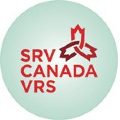Safe Use, Storage, and Disposal of Opioid Drugs
If you are having any symptoms or have any questions, please call 811 to speak with a registered nurse 24 hours a day.
Get emergency care if you or a loved one has serious thoughts of suicide or harming others.
What are opioids?
Opioids are powerful pain relievers your healthcare provider can prescribe to manage acute and chronic pain. Most opioids come in pill or tablet form and can be taken by mouth. Sometimes, healthcare providers prescribe a potent opioid that comes in patch form.
It’s important to take opioids exactly as prescribed by your healthcare provider. Not following the instructions can cause overdose and even death.
Path to improved health
Opioids block pain signals in the brain. Many opioids are available in short- and long‑acting forms. Short-acting forms work faster than long-acting forms, but for shorter periods. The long-acting forms are used to treat long-lasting pain. Opioids may not safely remove all of your pain, but they will improve your daily function.
How do I safely take opioids?
While opioids can help with your pain, they may also cause dangerous side effects. That’s why it’s important to tell your healthcare provider about all other medicines and supplements you are taking. Also, follow dosage instructions carefully for opioids. Don’t mix opioids with alcohol, illegal drugs, or even other medicines.
When you get your prescription filled, check the packaging to make sure that it is the right medicine prescribed for you.
Read and follow the label directions carefully.
How do I safely store opioids?
All opioids should be stored in their original packaging.
Don’t store them in places medicines are usually kept, such as in a bathroom or kitchen cabinet. Instead, place them in a locked cabinet, lockbox, or other location where people can’t easily access them.
Carefully note when and how much medicine you take in order to keep track of how much is left.
How do I safely dispose of opioids?
You can return unused and expired medications to any pharmacy in Canada, any day of the year. Many communities have medicine take-back programs. Contact your family healthcare provider for more information or visit Health Canada’s website at to learn more. You can also call your local pharmacy to ask if there is a take-back program in your community.
Opioids — both pill and patch forms — often come with instructions for flushing unused medicine to prevent unintentional use or illegal abuse. NEVER flush used and leftover medications or pain patches down the toilet. Even used patches still have enough medicine in them to be dangerous or deadly to pets, children, and others with a low tolerance for opioids. To dispose of a pain patch, fold it in half so the sticky sides stick together, then take it to a pharmacy. If you must dispose of medications in the garbage, remove all identifying information, hide it in something unappealing (used coffee grounds or pet litter) and place them in a closed bag, empty can or other sealed container.
If you are not sure about how to dispose of a medicine, contact your healthcare provider or pharmacist.
Things to consider
The abuse of opioids is a significant public safety concern. Teenagers and young adults most commonly get these medicines at home where another family member has stored them. If you think someone has taken your medicine, contact the police immediately to file a report.
What are the signs of overmedication or overdose?
Anyone using opioids is at risk of overmedication or overdose if they take too much. You are much more at risk of overmedication or overdose if you have never taken opioids.
Some signs of overmedication include:
- Slurred speech, stumbling while walking, dizziness, or confusion
- Excessive drowsiness or difficulty staying alert
- Difficulty waking from sleep
Some signs of overdose include:
- Cannot stay awake or if awake, is unable to speak or be kept awake
- Trouble breathing, including slow, shallow breathing or periods in which breathing stops
- Limpness, lifelessness
- Pale or clammy skin, or blue fingernails or lips
- Slow or stopped heartbeat
What should I do if someone has taken too much medicine?
- Call 911 immediately. Give the operator as much information as possible, including what opioid you think they have taken.
- Give the person naloxone if it’s available, you can give it while waiting for help to arrive
- If the person is having trouble breathing, the operator may ask if you are trained in cardiopulmonary resuscitation (CPR). You might be asked to perform CPR if you are trained to do so.
- After calling 911, stay with the person until emergency services arrive, even if the person wakes up.
Anyone suspected of taking an overdose of opioids should contact a healthcare provider and may need to be considered for counseling and further treatment as appropriate.
Can an opioid overdose be reversed?
Naloxone (brand name Narcan) is a medicine that blocks the effects of opioids. It quickly reverses the breathing problems that result from an opioid overdose. Naloxone can be given as a nasal spray to a person who has overdosed.
In Canada, people who might experience or witness an opioid overdose can obtain Naloxone (Narcan) from a pharmacy without a prescription. Family and friends of people taking opioids are encouraged to have naloxone at home so it can be given in the case of a suspected overdose.
FOR MORE INFORMATION
Health Canada:
https://www.canada.ca/en/health-canada/services/safe-disposal-prescription-drugs.html
60871

